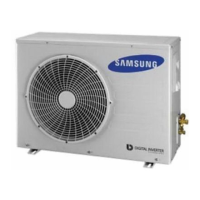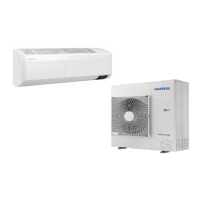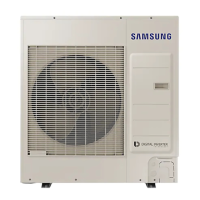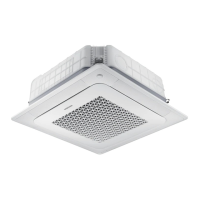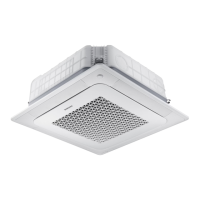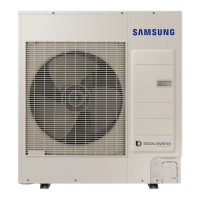12
English
Installation Procedure
Installation Procedure
Step 8 Performing the gas leak test
Pressure check the refrigerant system using high
pressure nitrogen in order to detect basic refrigerant
leaks. Before performing the vacuum process and
releasing the factory R-410A charge into the refrigerant
pipes, it is the responsibility of the installer to pressurize
the whole system with nitrogen (using a cylinder with
pressure reducer) at a pressure above 580.2 psi(4 Mpa)
(gauge).
Step 9 Insulating the refrigerant pipes
Once you have checked that there are no leaks in the
system, you can insulate the piping and hose.
1 To avoid condensation problems, place Acrylonitrile
Butadien Rubber separately around each refrigerant pipe.
NOTE
• Always make the seam of pipes face upwards.
2 Wind insulating tape around the pipes and drain hose
avoiding compressing the insulation too much.
CAUTION
• Be sure to wrap insulation tightly without any gaps.
3 Finish wrapping insulating tape around the rest of the
pipes leading to the outdoor unit.
4 The pipes and electrical cables connecting the indoor
unit with the outdoor unit must be fixed to the wall
with suitable ducts.
CAUTION
• Make sure that all refrigerant connection must be
accessible for easy maintenance and detachment.
• Install the insulation not to get wider and use the
adhesives on the connection part of it to prevent
moisture from entering.
• Wind the refrigerant pipe with insulation tape if it is
exposed to outside sunlight.
• Install the refrigerant pipe respecting that the
insulation does not get thinner on the bent part or
hanger of pipe.
• Add the additional insulation if the insulation plate
gets thinner.
5 Select the insulation of the refrigerant pipe.
• Insulate the gas side and liαuid side pipe, noting
the insulation thickness that must differ according
to the pipe size.
• Standard: Less than an indoor temperature of
86°F(30°C)
, with humidity at 85%. If installing
in a high humidity environment, use one grade
thicker insulator by referring to the table below.
If installing in an unfavourable environment, use
thicker one.
• The heat-resistance temperature of the insulator
must be more than
248°F(120°C)
.
Insulator Liαuid side
Gas side
No gap
NBR
Indoor unit
Insulation cover pipe
Be sure to overlap the insulation.
Insulation pipe
Additional insulation
Hanger
Refrigerant pipe
insulation

